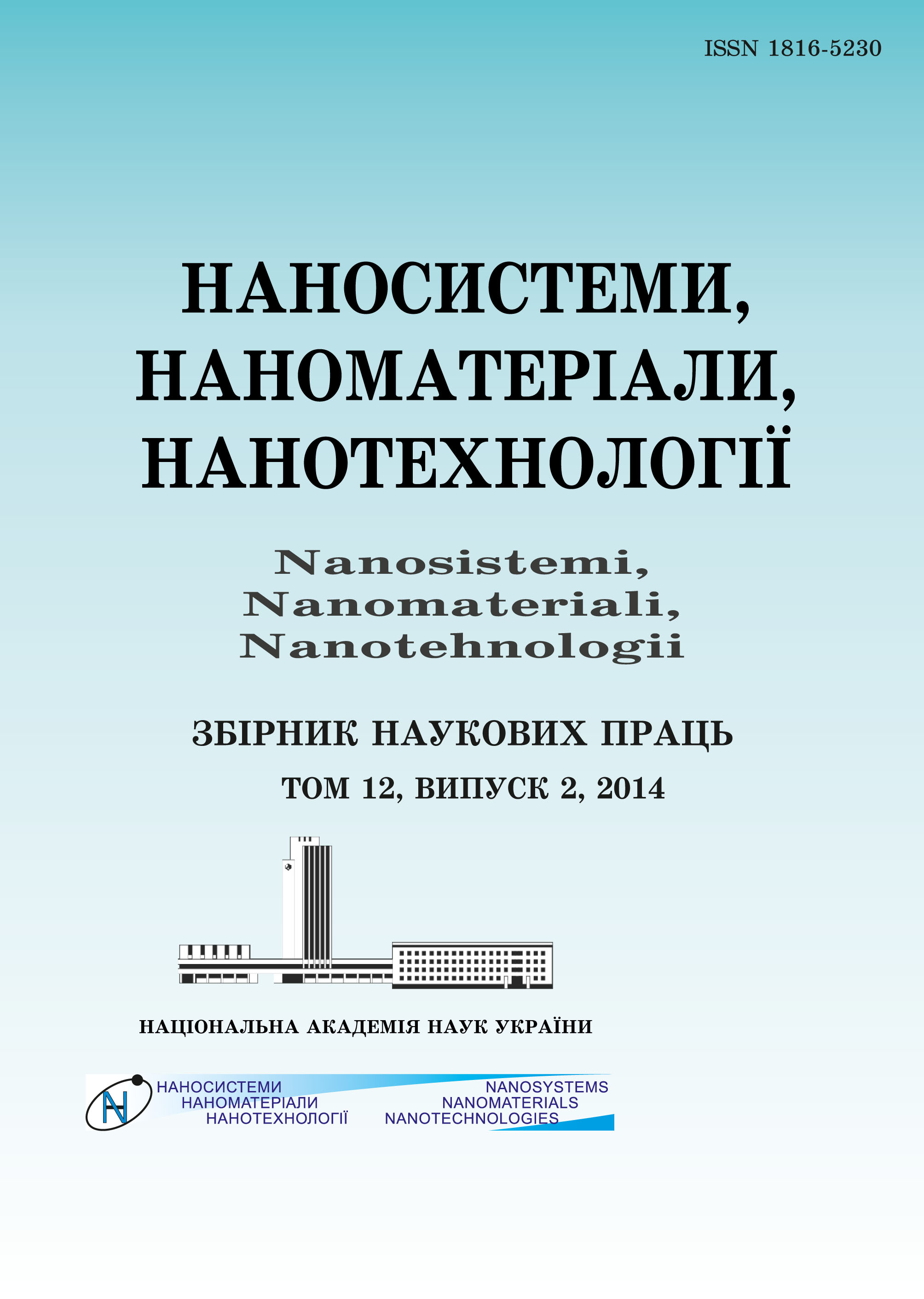|
|
|||||||||
 |
Year 2019 Volume 17, Issue 2 |
|
|||||||
|
|||||||||
Issues/2019/vol. 17 /Issue 2 |
N. V. Sych, S. I. Trofymenko, M. M. Tsyba, V. M. Vikarchuk, L. A. Kupchyk, M. F. Kovtun, A. Klunko
«Evaluation of the Effectiveness of Nanoporous Material Obtained by Activation of Coffee Sludge»
371–380 (2019)
PACS numbers: 61.43.Gt, 81.05.Rm, 81.05.U-, 81.07.Wx, 81.20.Wk, 83.50.Uv, 83.80.Fg
Samples of activated carbon are fabricated from powdered coffee sludge. The characteristics of porous structure of nanoporous material (with BET specific surface area of 835 m2/g, mesopores’ specific surface area of 230–300 m2/g, total pore volume of 0.5–0.6 cm3/g) are studied. Sorption properties of marker-substances are evaluated. The selectivity of samples with respect to heavy-metal ions is investigated that proves the expediency of use of such a material for the treatment of industrial effluents.
Key words: coffee sludge, physical activation, porous structure, surface area, sorption of heavy metals.
https://doi.org/10.15407/nnn.17.02.371
References
1. T. A. Kurniawan, G. Y. S. Chan, W.-H. Lo, and S. Babel, Sci. Total Environ., 366: 409 (2006). https://doi.org/10.1016/j.scitotenv.2005.10.0012. M. Chiban, A. Soudani, F. Sinan, S. Tahrouch, and M. Persin, Clean - Soil, Air, Water, 39: 376 (2011). https://doi.org/10.1002/clen.201000127
3. Mohamed Sulyman, Jacek Namiesnik, and Andrzej Gierak, Polish Journal of Environmental Studies, 26: 479 (2017). https://doi.org/10.15244/pjoes/66769
4. M. Sabry Shaheen, I. Fawzy Eissa, Khaled Ghanem, M. Hala Gamal El-Din, and S. Al Anany Fathia, Journal of Environmental Management., 128: 514 (2013). https://doi.org/10.1016/j.jenvman.2013.05.061
5. N. V. Sych, S. I. Trofymenko, M. M. Tsyba, and V. M. Vikarchuk, Nanosistemi, Nanomateriali, Nanotehnologii, 16: 363 (2018) (in Russian).
6. A. M. Youssef, N. R. E. Radwan, I. Abdel-Gawad, and G. A. A. Singer, Colloids and Surfaces A: Physicochemical and Engineering Aspects, 252: 143 (2005). https://doi.org/10.1016/j.colsurfa.2004.09.008
7. C. J. Dur n-Valle, M. G mez-Corzo, J. Pastor-Villegas, and V. G mez-Serrano, Journal of Analytical and Applied Pyrolysis, 73: 59 (2005). https://doi.org/10.1016/j.jaap.2004.10.004
8. N. V. Sych, S. I. Trofymenko, O. I. Poddubnaya, M. M. Tsyba, V. I. Sapsay, D. O. Klymchuk, and A. M. Puziy, Appl. Surf. Sci., 261: 75 (2012). https://doi.org/10.1016/j.apsusc.2012.07.084
9. A. Namane, A. Mekarzia, K. Benrachedi, N. Belhaneche-Bensemra, and A. Hellal, Journal of Hazardous Materials, 119: 189 (2005). https://doi.org/10.1016/j.jhazmat.2004.12.006
10. V. Boonamnuayvitaya, S. Saeung, and W. Tanthapanichakoon, Separation and Purification Technology, 42: 159 (2005). https://doi.org/10.1016/j.seppur.2004.07.007
11. M. C. Baquero, L. Giraldo, J. C. Moreno, F. Su rez-Garc a, A. Mart nez-Alonso, and J. M. D. Tasc n, Journal of Analytical and Applied Pyrolysis, 70: 779 (2003).
12. Chung-Hsin Wu, Chao-Yin Kuo, and Shu-Shian Guan, Desalination and Water Treatment, 57: 5056 (2016). https://doi.org/10.1080/19443994.2014.1002009
13. George Z. Kyzas, Materials, 5: 1826 (2012). https://doi.org/10.3390/ma5101826
14. Ridha Lafi, Anouar ben Fradj, Amor Hafiane, and B. H. Hameed, Korean J. Chem. Eng, 31: 2198 (2014). https://doi.org/10.1007/s11814-014-0171-7
15. K. S. W. Sing, D. H. Everett, R. A. W. Haul, L. Moscou, R. A. Pierotti, J. Rouquero, and T. Siemieniewska, Pure @ Appl Chem., 57: 603 (1985).
 This article is licensed under the Creative Commons Attribution-NoDerivatives 4.0 International License ©2003—2021 NANOSISTEMI, NANOMATERIALI, NANOTEHNOLOGII G. V. Kurdyumov Institute for Metal Physics of the National Academy of Sciences of Ukraine E-mail: tatar@imp.kiev.ua Phones and address of the editorial office About the collection User agreement |